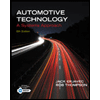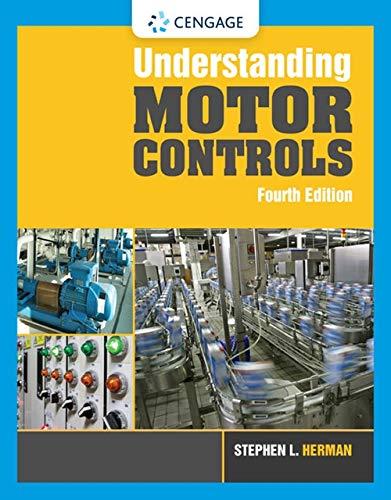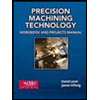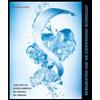
Automotive Technology: A Systems Approach (MindTap Course List)
6th Edition
ISBN: 9781133612315
Author: Jack Erjavec, Rob Thompson
Publisher: Cengage Learning
expand_more
expand_more
format_list_bulleted
Concept explainers
Textbook Question
Chapter 23, Problem 2RQ
Describe telematics.
Expert Solution & Answer
Trending nowThis is a popular solution!

Students have asked these similar questions
Give any two examples of conventional mechanical system converted to advanced mechatronics system.
Basic electronics
Explain FIVE (5) advantages of a mechatronic system over conventional system in consumer products.
Chapter 23 Solutions
Automotive Technology: A Systems Approach (MindTap Course List)
Ch. 23 - Prob. 1RQCh. 23 - Describe telematics.Ch. 23 - What should be checked if none of the grids in a...Ch. 23 - True or False? Rain-sensitive wiper systems...Ch. 23 - What component in a wiper system makes it possible...Ch. 23 - Name the two most common problems that occur with...Ch. 23 - Prob. 7RQCh. 23 - Prob. 8RQCh. 23 - What could be the problem when the vehicles dome...Ch. 23 - Rear defrosters generally have a relay with a...
Ch. 23 - Prob. 11RQCh. 23 - Prob. 12RQCh. 23 - Which of the following parts or circuits could...Ch. 23 - When diagnosing a vacuum/mechanical cruise control...Ch. 23 - Prob. 15RQCh. 23 - Prob. 1ASRQCh. 23 - Prob. 2ASRQCh. 23 - Prob. 3ASRQCh. 23 - The reasons for slower than normal wiper operation...Ch. 23 - Prob. 5ASRQCh. 23 - Technician A says that some antitheft systems...Ch. 23 - The circuit breaker at a power seat motor...Ch. 23 - Prob. 8ASRQCh. 23 - 9. Technician A says that navigational systems...Ch. 23 - While diagnosing a cruise control system that does...
Knowledge Booster
Learn more about
Need a deep-dive on the concept behind this application? Look no further. Learn more about this topic, mechanical-engineering and related others by exploring similar questions and additional content below.Similar questions
arrow_back_ios
SEE MORE QUESTIONS
arrow_forward_ios
Recommended textbooks for you
 Automotive Technology: A Systems Approach (MindTa...Mechanical EngineeringISBN:9781133612315Author:Jack Erjavec, Rob ThompsonPublisher:Cengage Learning
Automotive Technology: A Systems Approach (MindTa...Mechanical EngineeringISBN:9781133612315Author:Jack Erjavec, Rob ThompsonPublisher:Cengage Learning Understanding Motor ControlsMechanical EngineeringISBN:9781337798686Author:Stephen L. HermanPublisher:Delmar Cengage Learning
Understanding Motor ControlsMechanical EngineeringISBN:9781337798686Author:Stephen L. HermanPublisher:Delmar Cengage Learning Precision Machining Technology (MindTap Course Li...Mechanical EngineeringISBN:9781285444543Author:Peter J. Hoffman, Eric S. Hopewell, Brian JanesPublisher:Cengage Learning
Precision Machining Technology (MindTap Course Li...Mechanical EngineeringISBN:9781285444543Author:Peter J. Hoffman, Eric S. Hopewell, Brian JanesPublisher:Cengage Learning Refrigeration and Air Conditioning Technology (Mi...Mechanical EngineeringISBN:9781305578296Author:John Tomczyk, Eugene Silberstein, Bill Whitman, Bill JohnsonPublisher:Cengage Learning
Refrigeration and Air Conditioning Technology (Mi...Mechanical EngineeringISBN:9781305578296Author:John Tomczyk, Eugene Silberstein, Bill Whitman, Bill JohnsonPublisher:Cengage Learning Electrical Transformers and Rotating MachinesMechanical EngineeringISBN:9781305494817Author:Stephen L. HermanPublisher:Cengage Learning
Electrical Transformers and Rotating MachinesMechanical EngineeringISBN:9781305494817Author:Stephen L. HermanPublisher:Cengage Learning

Automotive Technology: A Systems Approach (MindTa...
Mechanical Engineering
ISBN:9781133612315
Author:Jack Erjavec, Rob Thompson
Publisher:Cengage Learning

Understanding Motor Controls
Mechanical Engineering
ISBN:9781337798686
Author:Stephen L. Herman
Publisher:Delmar Cengage Learning

Precision Machining Technology (MindTap Course Li...
Mechanical Engineering
ISBN:9781285444543
Author:Peter J. Hoffman, Eric S. Hopewell, Brian Janes
Publisher:Cengage Learning

Refrigeration and Air Conditioning Technology (Mi...
Mechanical Engineering
ISBN:9781305578296
Author:John Tomczyk, Eugene Silberstein, Bill Whitman, Bill Johnson
Publisher:Cengage Learning

Electrical Transformers and Rotating Machines
Mechanical Engineering
ISBN:9781305494817
Author:Stephen L. Herman
Publisher:Cengage Learning
Dynamics - Lesson 1: Introduction and Constant Acceleration Equations; Author: Jeff Hanson;https://www.youtube.com/watch?v=7aMiZ3b0Ieg;License: Standard YouTube License, CC-BY